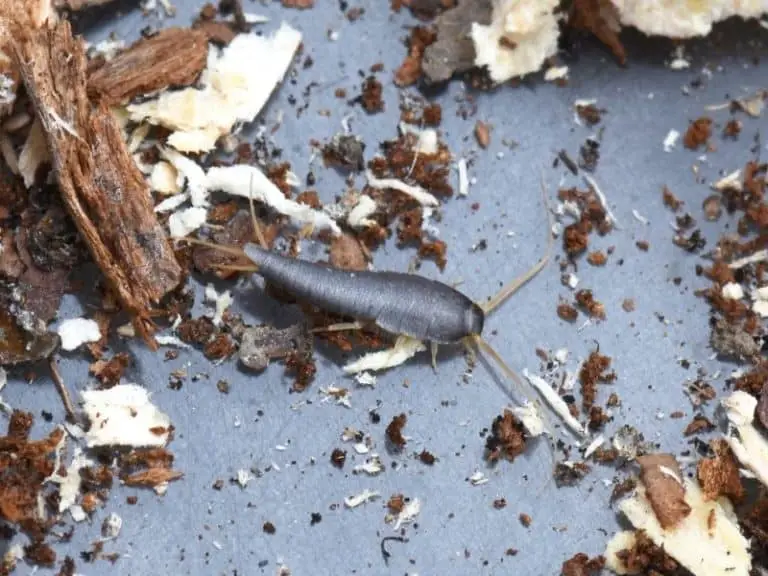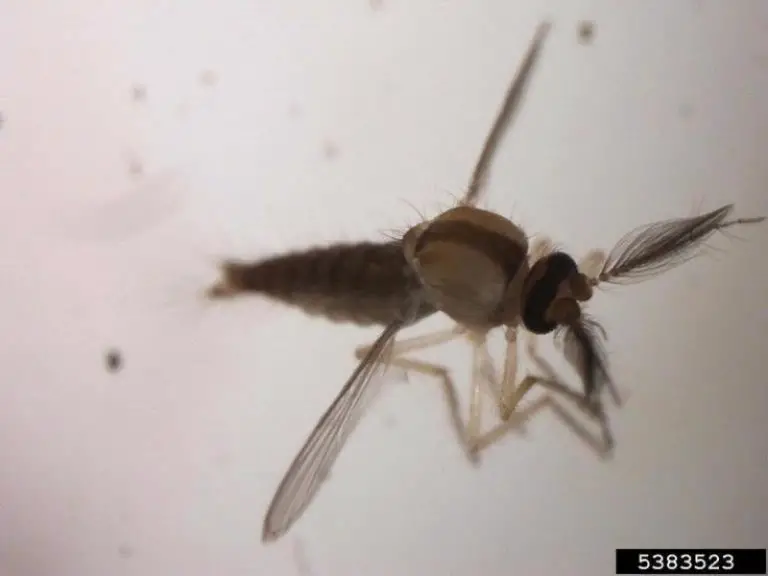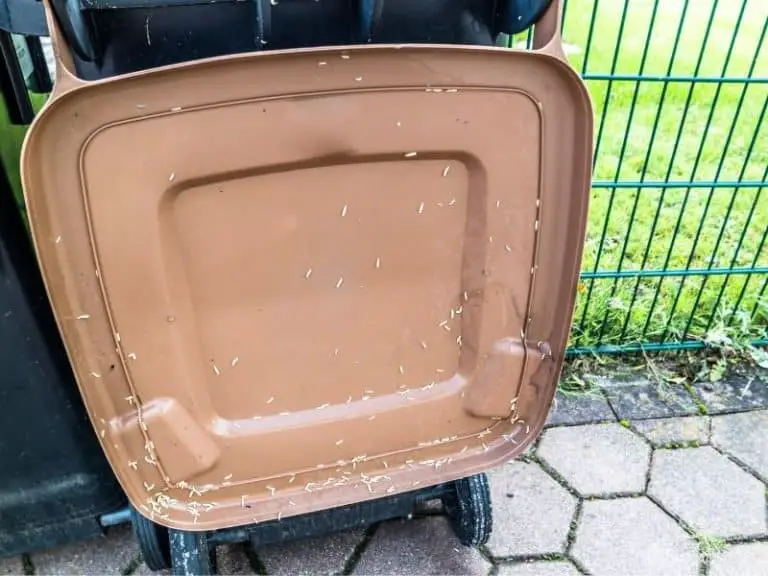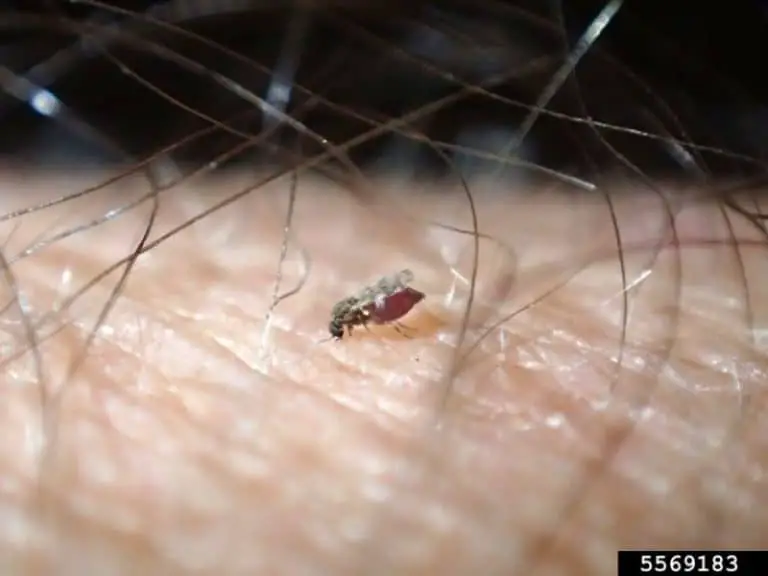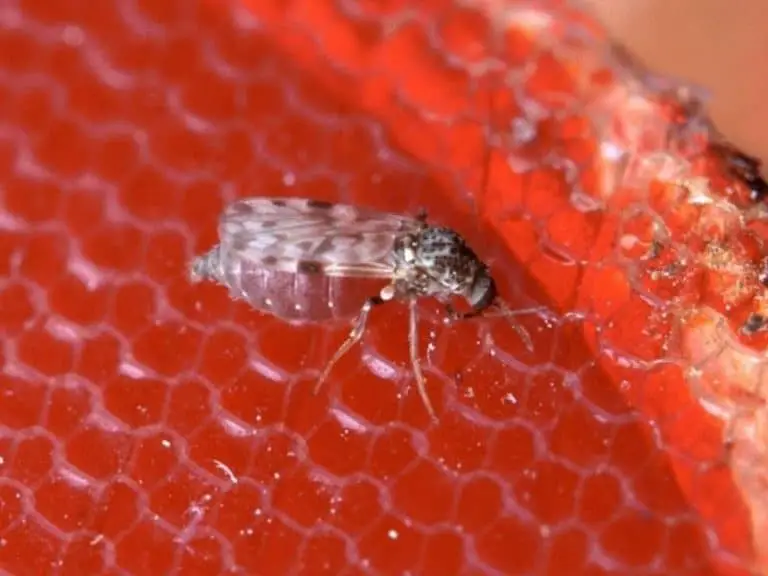What Silverfish Can Do: Jump, Swim, Climb, or Fly?
They may look like they came from outer space, but silverfish are just as from this planet as other common household pests such as bed bugs and cockroaches. Besides their alien-like appearance, the way silverfish are called makes these creepy crawlers even more baffling. But besides crawling, how else do they move into your house?
Silverfish can jump and climb. They can jump up to a couple of inches vertically when necessary. They can also climb trouble-free, except on smooth or slippery surfaces. Silverfish cannot swim and fly. Their short legs are not suitable for paddling and silverfish do not have wings necessary for flying.
Getting to know silverfish more can make them less terrifying. More importantly, it will make them easier to eliminate from your home. It’s true that silverfish do not bite humans.
They also do not spread all sorts of diseases through their bites. However, they can wreak havoc on your life by causing significant damage to your various belongings.
Keep on reading to know some of the most important (and also interesting) matters about silverfish.
Can Silverfish Jump?
Silverfish can jump. As a matter of fact, silverfish can jump very well for their size. They can jump up to two feet vertically. Instead of using their six short legs, silverfish use their abdomen to jump. There is no need for silverfish to jump horizontally as they can crawl faster than centipedes.
Among all the insects that can invade homes, silverfish are some of the most unique-looking.
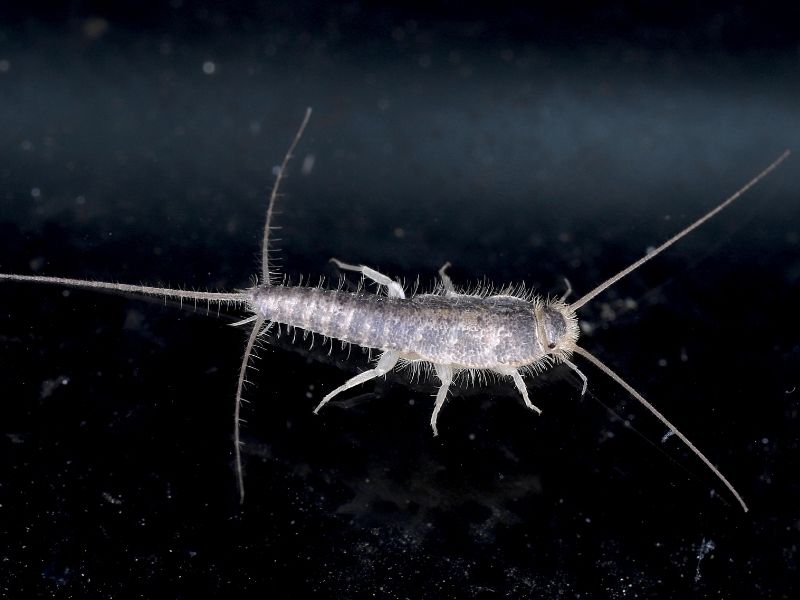
Easily, silverfish can also be some of the most terrifying-looking because of their scaly bodies and long antennas on both ends.
Some insects closely resemble silverfish. They are called jumping bristletails. Like silverfish, jumping bristletails look metallic and slimy, and they have three antennas on their tails, too. However, jumping bristletails look more like shrimps than fish. This is what makes them distinguishable from silverfish.
As their name suggests, jumping bristletails are very good jumpers — they can jump up to one foot vertically. Still, silverfish are better at vertical jumping than jumping bristletails.
Can Silverfish Swim?
Silverfish cannot swim. Despite what they are called, silverfish cannot survive in water. As a matter of fact, one way to kill them is by submerging infested items in water for a few minutes. It’s true that silverfish love staying in moist places. However, they hate water as they can easily drown.
There are three reasons why silverfish are called silverfish:
- They are shaped like fish.
- They have scaly and slimy-looking bodies like fish.
- They appear as though they are swimming when they crawl.
Although there are many things that make them closely resemble fish, silverfish cannot swim. So, needless to say, silverfish don’t like water at all — they will stay as far away from it as possible.
What silverfish like, on the other hand, is moisture. It’s for this reason why they love hanging out where it’s damp.
To protect your clothes and other belongings out of natural fabrics from silverfish, keep them dry.
However, it doesn’t mean that silverfish will no longer nibble on them.
It’s just that it is less likely for them to grab the attention of silverfish.
Can Silverfish Fly?
Silverfish cannot fly. It’s for the obvious fact that they do not have wings. They can crawl, run or jump from one point to the other, but silverfish cannot get from place to place by flying. In some instances, silverfish can fall from the ceiling, which can make some people think that they can fly.
A few reasons exist why silverfish are some of the most terrifying common household pests despite their size. For one, they are scaly and have lots of antennas, and this is more than enough to freak many people out.
One more reason why silverfish can be panic-inducing is that they are nocturnal creatures.
So, in other words, they don’t like the light.
Because of this, they are often seen scurrying away when the lights come on in the kitchen at night. This can make them mistaken for cockroaches, which are notorious for flying or gliding.
To infest one area of your home to the other, silverfish have no choice but to rely on their six short legs to crawl or climb, or their abdominal muscles to jump vertically.
The takeaway: There are many things that silverfish cannot do. For instance, they can neither swim nor fly. Despite this, silverfish find it easy to multiply uncontrollably and take control over one’s home!
9 Things That Silverfish Can Do
When it comes to dealing with common household pests, it’s a must that you try to get to know your enemies first. Have an idea of their eating habits, nesting preferences, strengths, weaknesses and other important matters.
Failure to get acquainted with your enemies very well beforehand can easily lead to disappointment, stress and unnecessary expenses.
This is especially true if you wish to get rid of them through the DIY approach. Without enough preparation, you could wind up spending more time and money than you would contact the experts.
No matter if you have an ongoing silverfish infestation or you just wish to get ready for their invasion one day, read on.
The following are some of the things that silverfish can do to you and your home (plus a few interesting facts)…
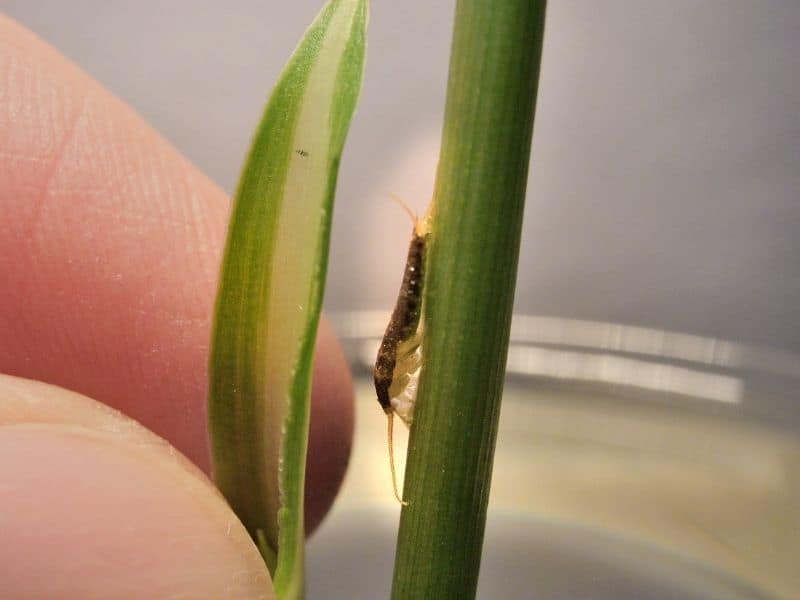
Climb Vertically As Fast as They Crawl
Silverfish can climb. Unfortunately, they cannot climb as fast as they can crawl. Silverfish are very good at climbing all sorts of rough surfaces. On the other hand, they find it extremely difficult to climb smooth surfaces. Because of this, silverfish have a tough time escaping from glass jars.
Practically any area in the home can serve as a nest for silverfish.
However, they love staying where there is plenty of moisture, like the basement and attic. Coincidentally, there are many things in the attic that silverfish can eat.
To get to the attic, silverfish have to climb. And because they are good climbers, except when the surface is smooth or slippery, it doesn’t take a long time before they gain access to your attic.
In some instances, silverfish get introduced into attics by means of items or objects they are hiding in.
Because of the climbing ability of silverfish, the use of sticky traps can help keep them away from where you don’t want them. For instance, you may line your bookshelf with sticky traps to protect your books.
Cause Holes In Clothes, Books, Bedding, etc.
If there are silverfish in your home, fearing for your health and safety should be the least of your worries — except if you are suffering from asthma or allergy (we will talk more about this in a few).
Silverfish are not fond of biting humans, and it’s for a couple of reasons:
- Human blood is not part of their diet.
- Their jaws are too weak to make their teeth pierce human skin.
A silverfish infestation needs to be dealt with because these scaly insects can cause substantial damage to your belongings.
The diet of silverfish is extensive.
They eat anything from books, wallpapers, carpets, beddings, paintings, photographs, documents, clothes, to toiletries such as soap, shampoo, and lotion.
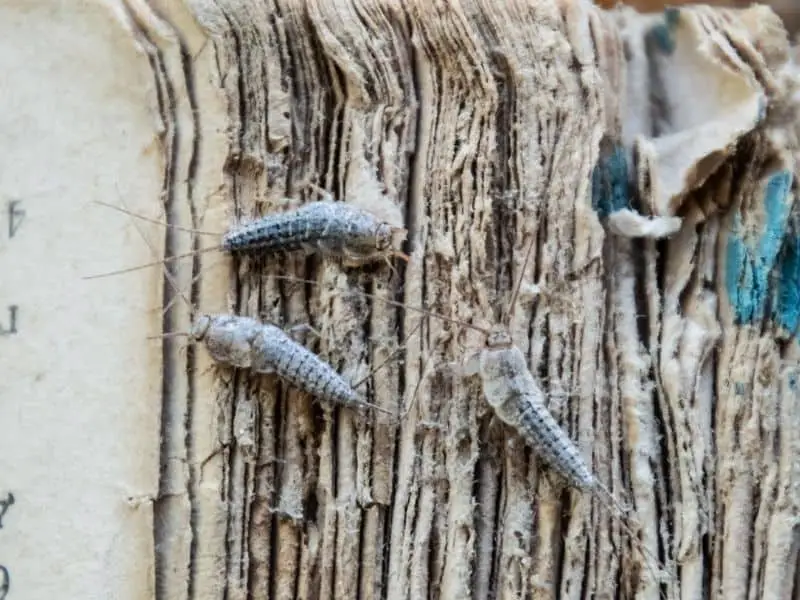
Failure to put flour, cereals, oats, cookies and other pantry foods in airtight containers can put them at risk of being feasted on by silverfish — these common household pests love to snack on the majority of the items in your pantry.
By the way, silverfish also love munching on human hair.
And if you have dandruff, it’s very much likely for some silverfish to crawl on your head while you are fast asleep to eat the flakes on your scalp and in your mane!
Leave Unsightly Stains Behind
It’s not just holes that may appear on the pages of books and magazines as well as clothes, drapes, wallpapers, artworks and printed snapshots if you share your home with silverfish. You may also notice yellowish stains.
Silverfish produce a yellow substance as they go about their everyday life, which is all about eating, mating and sleeping.
And this substance rubs off on practically anything that silverfish crawl on and feed, too. The yellowish stains silverfish tend to leave behind are more noticeable the lighter the color of the surface or material.
Another reason why silverfish are notorious for leaving behind stains is that they poop everywhere. The droppings of silverfish look like ground black pepper, which homeowners often mistake for dust and dirt.
Because silverfish like to stay where it’s damp, their fecal matter can easily absorb excess moisture in the air, causing them to get wet and mushy. This can leave a nasty stain on your belongings as well as on various surfaces.
Outrun Centipedes and Spiders
Dinosaurs came into being about 240 million years ago.
On the other hand, silverfish came into being about 400 million years ago. So, in other words, they have been around longer than dinosaurs.
By the way, the oldest insect is called Rhyniognatha hirsti. It appeared about 410 million years ago.
Silverfish did not evolve that much since the first time they crawled the planet. Perhaps Mother Nature was well-aware of the fact that if it isn’t broken, don’t fix it.
Just about everything that silverfish need to survive is already in their possession.
For instance, they can outrun centipedes and spiders, both of which are fond of eating silverfish.
The way they move their bodies back and forth when crawling, which is one of the reasons why they are called silverfish, makes it harder for their predators to catch them.
They may not have grown wings, but silverfish are excellent jumpers — they can jump up to two feet vertically. Silverfish can also climb. However, climbing smooth or slippery surfaces is their weakness.
Resist to the Most Types of Insecticides
Because they have been around for millions of years now, it doesn’t come as a big surprise why silverfish have developed immunity to various substances that could kill them.
For instance, silverfish have developed tolerance to many types of insecticides. Some of those that silverfish find harmless are commercially-bought insecticides.
It’s because of this why a can of insecticide you can buy at the local hardware store may fail to get rid of silverfish that have forced themselves into your home.
Making it harder to deal with silverfish is the fact that they are nocturnal creatures.
This means that silverfish are more active at night, and they tend to stay away from the light during the day.
Because you don’t see them often, you may not realize that you have a silverfish infestation until such time that the pages of your books are filled with holes or your jar of flour has lots of dead or live silverfish.
The good news is that professional pest control companies have the chemicals necessary to kill silverfish once and for all.
So, if you are having a difficult time eliminating silverfish from your life using some DIY solutions, consider getting in touch with the most trusted exterminator servicing the local residents.
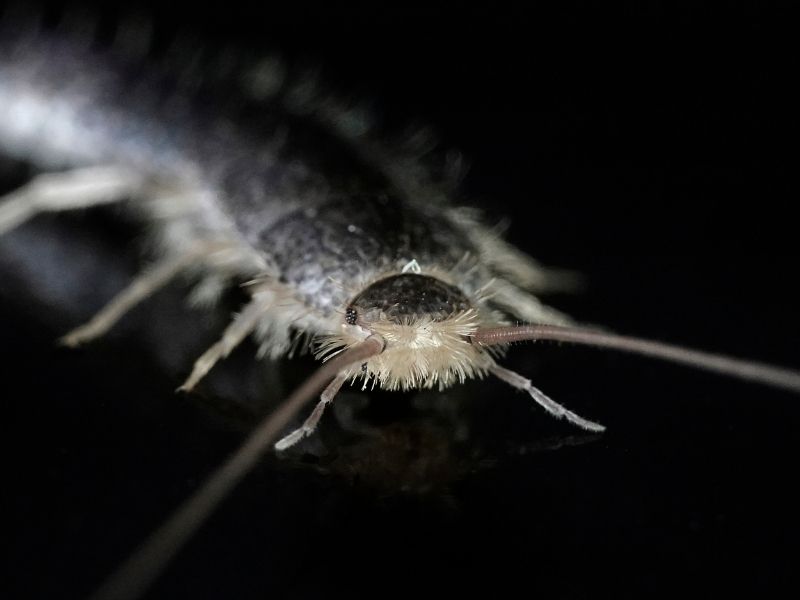
Continuously Shed Their Scaly Skin
Many insects shed their skin, which is called “molting”. It has to happen to allow the insects to grow. Once the insects reach full maturity, they will stop shedding their skin as they will no longer grow.
However, it is a completely different matter when it comes to silverfish — they keep on shedding their skin even if they are already adults. As a matter of fact, silverfish will shed their skin until the day they die.
It’s for this reason exactly why coming across shed skins is one of the telltale signs that you have a silverfish infestation.
The shed skins of silverfish are scaly. But because they are so thin, they are almost transparent. If you don’t have 20/20 vision, you may fail to spot the shed skins of silverfish.
Naturally, you will find a high concentration of shed skins in areas where silverfish feed. There are also many of them where silverfish nest or hide.
Regularly vacuuming trouble spots is an effective way to get rid of shed skins — it’s important to remove the shed skins of silverfish for a reason that we will talk about next.
Exacerbate Asthma and Allergies
Earlier, it was mentioned that silverfish do not bite, which is why it’s impossible for you to get any blood-borne diseases from them.
However, it was also briefly mentioned that it’s a different thing if you have asthma or an allergy.
What makes silverfish a problem for people with asthma or allergies is that they constantly shed skin throughout their lives. Silverfish can live anywhere from two to eight years.
And throughout their long lives, silverfish shed their skin around 60 times. If there are hundreds of silverfish in your home, you are exposed to tons of shed skins!
Some people with asthma may have a flare-up each time they inhale bits of silverfish shed skin in the air.
Some people with allergies may experience skin itchiness and redness when they come into contact with them.
Making matters worse is that the droppings and the scales and other parts of dead silverfish can circulate in the indoor air, too.
Point to Structural Issues in House
If lots of silverfish are around, it is very much possible that there are a few other things that you need to worry about besides these scaly common household pests.
Some of the places that silverfish love to inhabit are those that are damp and humid. And when there’s unnecessary moisture, chances are that there is a water-related problem, such as a leak or flood.
It’s due to this why the presence of a silverfish infestation should encourage you to investigate the structural integrity of your home.
Unfortunately, silverfish are not the only ones that love to make a playground out of any moisture-rich place in your home. Mold is also something that tends to thrive very well if excess moisture is around.
Just like silverfish, mold can be harmful to anyone who is suffering from asthma or allergy. Refrain from assuming that it’s perfectly fine to have mold around if you don’t have asthma or allergy.
Exposure to mold can irritate your eyes, nose, and throat. In many instances, mold can also make your home smell musty.
Attract Other Common Household Pests
Besides saving your belongings from incurring irreversible damage, there is another reason why it’s important to put an end to a silverfish infestation without delay. It’s to keep other common household pests from invading your home.
Silverfish eat so many things in your home. They range anywhere from paper, cereals to toothpaste. Similarly, there are many insects that eat silverfish.
Having lots of silverfish around can encourage those silverfish-eating insects to enter your home without your knowledge. Some of them may even choose to stay there.
Some insects that love eating silverfish include:
- Cockroaches
- Spiders
- Centipedes
- Earwigs
- Carpet beetles
The insects mentioned above may help get rid of carpet beetles alright.
However, having them around gets rid of the problem only to replace it with other problems, some of which are more serious than a silverfish infestation!
For instance, cockroaches can spread diseases such as gastroenteritis, dysentery, and typhoid fever.
On the other hand, carpet beetles can damage carpets, upholstered furniture, and clothes.
Takeaway
Silverfish may be one of the most terrifying-looking common household pests alright.
This is true even if they are some of the smallest of the bunch — silverfish are no longer than a nickel.
However, getting to know them can make them less intimidating, which is one of the secrets to successfully eliminating silverfish via the DIY route.
But if it seems like you cannot rid your home of silverfish through some home remedies, it’s a good idea to get in touch with the most reliable and experienced pest control company in your area.
Photo credit: ©canva.com
Medical Disclaimer: TheHomePestControl is a digital publisher and does not offer personal health or medical advice. The contents of this website are not intended to substitute for professional medical advice, diagnosis, or treatment.
Affiliate Disclaimer: As an Amazon Associate, I earn from qualifying purchases made on our website. If you make a purchase through links from this website, I may earn a commission at no additional cost to you.

